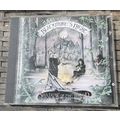Caravaggio - Adoration of the Shepherds, 1609 - art postcard
- Condition : Used
- Dispatch : 2 Days
- Brand : None
- ID# : 200487508
- Quantity : 1 item
- Views : 419
- Location : United Kingdom

- Seller : justthebook (+1703)
- Barcode : None
- Start : Fri 23 Apr 2021 15:17:10 (BST)
- Close : Run Until Sold
- Remain : Run Until Sold
More Listings from This Seller view all
Seller's Description
- Art Postcard
- Work of art title: The Adoration of the Shepherds, 1609
- Artist (if known): Michaelangelo Merisi da Caravaggio
- Media or other details: oil on canvas
- Publisher / Gallery: Museo Regionale, Messina
- Postally used: no
- Stamp & postmark details (if relevant):
- Size: Modern
- Notes & condition details:
NOTES:
Size: 'Modern' is usually around 6in x 4in or larger / 'Old Standard' is usually around 5½in x 3½in. Larger sizes mentioned, but if you need to know the exact size please ask as this can vary.
All postcards are not totally new and are pre-owned. It's inevitable that older cards may show signs of ageing and use, particularly if sent through the post. Any faults other than normal ageing are noted.
Stock No.: A1177
Please ask if you need any other information and I will do the best I can to answer.
------------------------------------------------
Postage and packing charge should be showing for your location (contact if not sure).
UK - PayPal, Cheque (from UK bank) or postal order
I will give a full refund if you are not fully satisfied with the postcard.
----------------------------------------------
Michelangelo Merisi (Michele Angelo Merigi or Amerighi) da Caravaggio (/ˌkærəˈvædʒioʊ/, US: /-ˈvɑːdʒ(i)oʊ/, Italian pronunciation: [mikeˈlandʒelo meˈriːzi da kkaraˈvaddʒo]; 29 September 1571[2] – 18 July 1610) was an Italian painter active in Rome for most of his artistic life. During the final four years of his life he moved between Naples, Malta, and Sicily until his death. His paintings combine a realistic observation of the human state, both physical and emotional, with a dramatic use of lighting, which had a formative influence on Baroque painting.[3][4][5]
Caravaggio employed close physical observation with a dramatic use of chiaroscuro that came to be known as tenebrism. He made the technique a dominant stylistic element, darkening shadows and transfixing subjects in bright shafts of light. Caravaggio vividly expressed crucial moments and scenes, often featuring violent struggles, torture, and death. He worked rapidly, with live models, preferring to forgo drawings and work directly onto the canvas. His influence on the new Baroque style that emerged from Mannerism was profound. It can be seen directly or indirectly in the work of Peter Paul Rubens, Jusepe de Ribera, Gian Lorenzo Bernini, and Rembrandt, and artists in the following generation heavily under his influence were called the "Caravaggisti" (or "Caravagesques"), as well as tenebrists or tenebrosi ("shadowists").
Caravaggio trained as a painter in Milan before moving in his twenties to Rome. He developed a considerable name as an artist, and as a violent, touchy and provocative man. A brawl led to a death sentence for murder and forced him to flee to Naples. There he again established himself as one of the most prominent Italian painters of his generation. He traveled in 1607 to Malta and on to Sicily, and pursued a papal pardon for his sentence. In 1609 he returned to Naples, where he was involved in a violent clash; his face was disfigured and rumours of his death circulated. Questions about his mental state arose from his erratic and bizarre behavior. He died in 1610 under uncertain circumstances while on his way from Naples to Rome. Reports stated that he died of a fever, but suggestions have been made that he was murdered or that he died of lead poisoning.
Caravaggio's innovations inspired Baroque painting, but the Baroque incorporated the drama of his chiaroscuro without the psychological realism. The style evolved and fashions changed, and Caravaggio fell out of favor. In the 20th century interest in his work revived, and his importance to the development of Western art was reevaluated. The 20th-century art historian André Berne-Joffroy stated: "What begins in the work of Caravaggio is, quite simply, modern painting."[6]
The Adoration of the Shepherds is an oil on canvas painting by the Italian artist Michelangelo Merisi, commonly known as Caravaggio. The Adoration of the Shepherds measures 83.07 x 123.62 in. It was commissioned for the Capuchin Franciscans and was painted in Messina for the Church of Santa Maria degli Angeli in 1609 just one year before the artist's death. It is now in the Interdisciplinary Regional Museum of Messina.
About the Artist
Michelangelo Merisi, commonly known as Caravaggio, was born in Milan in the northern region of Lombardy, Italy in 1571. He had to flee from his hometown after wounding a police officer in a tavern brawl. As with most other aspiring artists, he went to Rome to study classical techniques. Throughout his young adult life, Caravaggio was known amongst Italian citizens to be quite unruly and rebellious. He was often arrested on charges for violent behavior.
Cardinal Francesco del Monte took a struggling Caravaggio into his home, and introduced him to his circle—thereby securing Caravaggio with his first public commissions. These commissions were not religious, but entirely secular paintings ranging from flowers and fruit to paintings of a young classical Greek god. It was during this time that he would become world-renowned for the physical particularity and brutal realism of his paintings. In 1599, Caravaggio reached a turning point in his artistic career.
Presumably under Cardinal Francesco de Monte, Caravaggio was commissioned to decorate a wall dedicated to Saint Matthew in the Contarelli Chapel in the church of San Luigi dei Francesi. This was Caravaggio's first religious work for the Catholic Church. He began to be seen as an artistic visionary for the Church with his use of anachronistic technique to draw people back to the Catholic Church during the Counter Reformation. With this good publicity, he began to pick up many more prestigious commissions. Caravaggio painted from life rather than drawings, which initially received criticism but later revolutionized the term “artistic realism”.
Caravaggio mysteriously died in 1610, a year after finishing The Adoration of the Shepherds.[1]
The Creation and Artistic Analysis of The Adoration of the Shepherds
By the time that Caravaggio painted The Adoration of the Shepherds in 1609, the subjects in his paintings had acquired a more spiritual expressiveness. His figures were isolated against vast, empty backgrounds. This was a contrast to the Renaissance technique of employing decorative backgrounds.
The Capuchins were among the few religious patrons and critics who were fond of Caravaggio's brutal realism. Many were critical of Caravaggio's approach to his religious paintings and called it “vulgar” to represent biblical figures as ordinary peasants. The focal point of the scene is Mary in the center. She is swathed in bright red. One of the three shepherds closest to her also has a little bit of what appears to be the same red robe draped along his arm. This might be symbolic of the gesture he is making to touch the Virgin as she is holding Christ. All three shepherds, as well as Joseph identified by a faint halo, look on with amazement and complete adoration at this infant child born in a barn.
Caravaggio's Baroque work is starkly different and revolutionary from Renaissance predecessors. To start, these divine figures are represented as ordinary people of the times. They are barefoot with ordinary robes. There is no divinity in the barn, either. There is no holy light source to shine the entire scene and make it overly-apparent that a divine event is occurring. Instead, the background is extremely dark with only a small single light source. It seems as though the space was lit by a single candle, as it might have realistically been during the actual event. We know that in the biblical account, Mary and Joseph were extremely poor. Their halos are almost barely seen, in contrast to the ornate halos of the Renaissance. Other than the halos, the clasped hands of the shepherds is the only thing hinting of any religious importance in the painting. There was nothing overtly marvelous about the birth of Christ. Caravaggio renders this aspect perfectly.
Caravaggio's compositions are also non-classical: he arranges his figures along imaginary diagonal lines rather than a perfectly center linear composition like the Renaissance. There is a box of tools in the foreground, presumably Joseph's since he was a carpenter. There is a single roughly baked loaf of bread as well, to reiterate Mary and Joseph's poverty. There is nothing pre-arranged in the painting. It looks like a photograph that would have been taken in the exact moments after Christ's birth.
Stylistically, Caravaggio used a technique he was famous for developing called chiaroscuro. Chiaroscuro is a contrast between dark and light. Using this technique heightened the drama of the work to make it seem raw and magnify the emotional aspects of the work. Chiaroscuro forces the viewer to focus on the figures and the event rather than other things going on in the background.
The central theme of the painting is humility. By seating the Virgin on the ground, Caravaggio implies that she is not a heavenly queen, but rather a simple young mother. This painting is a representation of the majority. The response of the shepherds is to admire rather than to venerate. There is a calmness and tranquility that is unmistakably conveying their worth as common-folk for the people as the parents of the Savior.[2]
Listing Information
| Listing Type | Gallery Listing |
| Listing ID# | 200487508 |
| Start Time | Fri 23 Apr 2021 15:17:10 (BST) |
| Close Time | Run Until Sold |
| Starting Bid | Fixed Price (no bidding) |
| Item Condition | Used |
| Bids | 0 |
| Views | 419 |
| Dispatch Time | 2 Days |
| Quantity | 1 |
| Location | United Kingdom |
| Auto Extend | No |




 for 1 item(s)
for 1 item(s)












